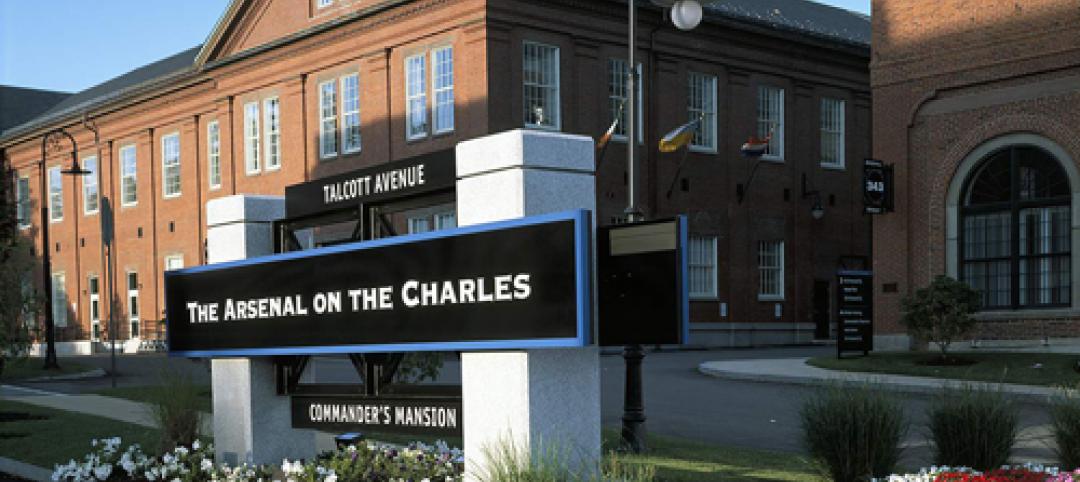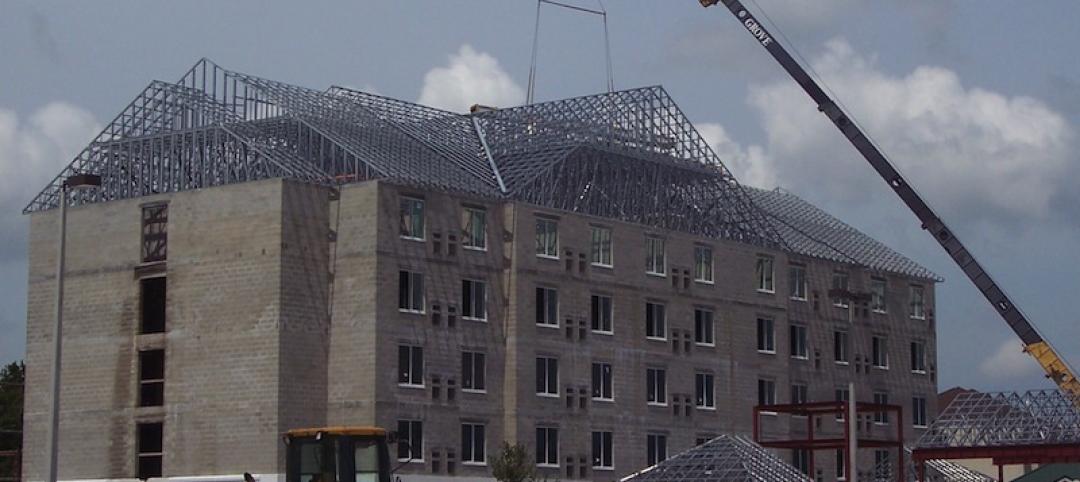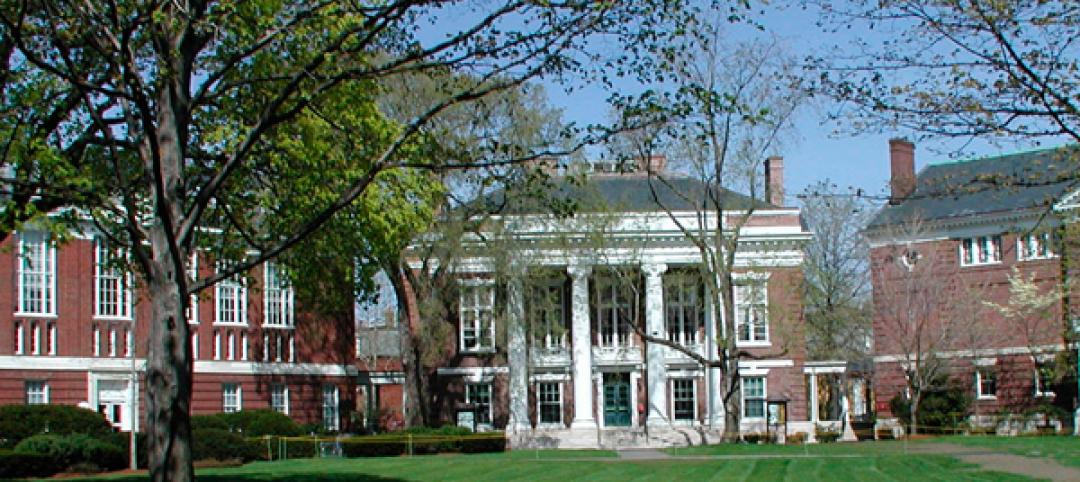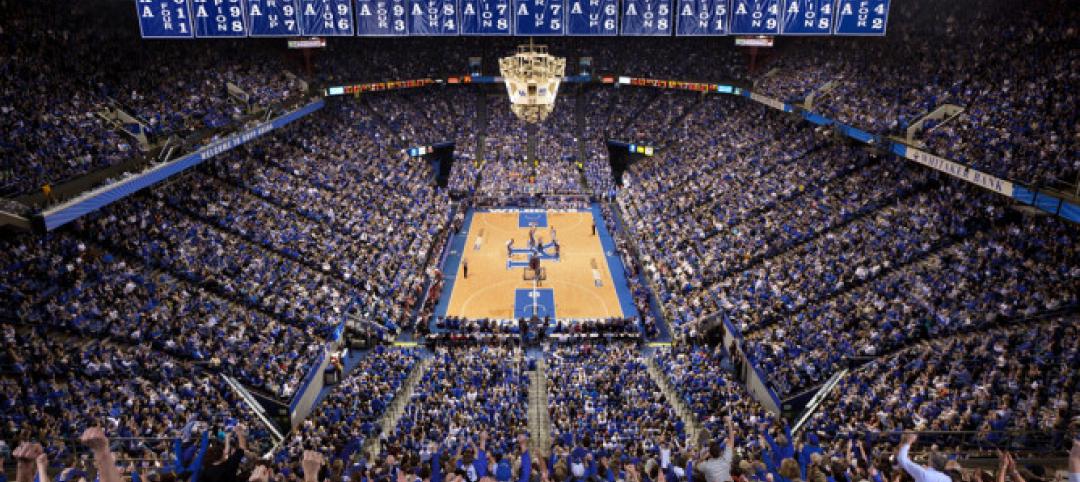In a former gold mine in Lead, S.D., an underground research facility is being renovated for a major experiment that, when completed in two years, would be the most sensitive dark-matter detector ever produced, capable of detecting collisions between galactic dark matter and regular matter within an unprecedented range.
Dark matter accounts for 85% of all matter. It affects the motion of galaxies, bends light, and influences the very structure of the universe. The LUX-ZEPLIN (LZ) experiment (which stands for Large Underground Xenon and ZonEd Proportional scintillation in Liquid Noble gases) will be conducted in the Davis Cavern at Sanford Underground Research Facility, or SURF, which is shielded from cosmic background radiation by nearly a mile of rock.
Architects and engineers with LEO A DALY designed the renovations to Davis Cavern at the same time as LZ’s team of 220 scientists finalized the design of the experimental apparatus itself. LZ holds 10 tons of liquid xenon, making it about 30 times larger and 100 times more sensitive than a previous LUX experiment that SURF conducted between 2012 and 2016.
“The level of coordination and flexibility required, in a tight underground space, with parameters constantly evolving, and with extraordinary safety and cleanliness considerations, made this one of the most challenging and exhilarating projects we’ve ever done,” said Steven Andersen, a senior architect and project manager with LEO A DALY in Minneapolis.
LZ was selected by the U.S. Department of Energy (DOE) and the U.S. National Science Foundation as one of the three G2 (for Generation 2) dark matter experiments. In February 2017, the project passed a DOE review and approval stage known as “Critical Decision 3,” which accepted the final design and formally launched construction.

When this renovation and new installations are completed in 2020, the LZ experiment will be 30 times larger and 100 times more sensitive than a previous dark-matter experiment that took place between 2012-2016. Image: SURF, courtesy of LEO A DALY
The experiment—which will take place on the Davis Campus that’s 4,850 feet below ground level—is a collaboration among scientists and engineers from 37 institutions in the U.S., United Kingdom, Portugal, Russia, and Korea. It is one of the few second-generation projects investigating the theory that dark matter is made up of weakly interactive massive particles (WIMPS). Direct detection of WIMPS would be a major discovery in this field.
John Keefner, underground operations engineer with SURF, said in a prepared statement that planning for this experiment started even before LUX was built. “We’re finally at the point where we can begin to refit the cavern and existing infrastructure to all for the installation of LZ.”
The renovation includes removing an existing cleanroom, tearing down a wall between two former low-background counting rooms, installing a new hoist system, building a work deck and modifying the water tank itself to accommodate the larger cryostat. A wall in the lower level of Davis Cavern will be removed to make way for four compressors that will be used for emergency xenon storage recovery. Other renovations include a radon reduction room and a xenon storage room.
This renovation work is being handled by Ainsworth Benning Construction, and will include updates to the cavern’s plumbing, electrical and ventilations systems, after which the scientists can begin installing the experiment itself. This work is complicated by the fact that on the other side of the cavern is the entrance to the Majorana Demonstrator Project, another sensitive experiment that requires an extremely clean environment.
Related Stories
| Sep 17, 2013
Complex stained glass restoration under way on Wisconsin Capitol Building
Work is under way at the Wisconsin State Capitol on an extensive $2.7 million, 14-month renovation to the skylights above the House and Senate chambers, along with the barrel vault skyline above the grand staircase and the panels in the rotunda dome.
| Sep 10, 2013
Melbourne, Australia’s ambitious retrofit program earns climate leadership award
The 1200 Buildings program in Melbourne, Australia was designed to encourage the retrofitting of 1,200 commercial buildings, or about 70% of the city’s commercial buildings stock.
| Sep 4, 2013
Twenty-nine-acre brick building complex in Watertown, Mass., to be renovated as innovation hub
The owner of a 29-acre cluster of brick buildings in Watertown, Mass., wants to reinvent the site as a 21st-century innovation hub.
| Aug 26, 2013
2013 will be record year for hotel renovations
The U.S. hotel industry is expected to spend $5.6 billion on capital expenditures this year, exceeding the most recent record of $5.5 billion set in 2008.
| Aug 19, 2013
Discovery of hidden asbestos complicates DFW terminal renovations
The finding of more asbestos in Terminal B than expected, and the pending merger of US Airways and the airport’s largest tenant, American Airlines, is causing construction delays on a $2.3 billion Dallas/Fort Worth Airport terminal renovation.
| Aug 13, 2013
Wausau acquires Custom Window in Colorado
Apogee Wausau Group, Inc., doing business as Wausau Window and Wall Systems, has acquired the assets of Benchmark Sales Agency, Inc., doing business as Custom Window Company, Inc., to expand Wausau’s product offering and U.S. geographic reach. Terms of the purchase were not disclosed.
| Aug 12, 2013
Decade-long renovation of Kansas Capitol Building expected to be complete by year end
A $300 million-plus, decade-long renovation of the Kansas Capitol Building in Topeka is expected to be complete by the end of the year. The exterior refurbishing of copper over the four imposing wings and around the dome should be complete by late November.
| Aug 6, 2013
Renovation of Radcliffe Institute for Advanced Study yields oldest LEED-certified building in U.S.
The Radcliffe Institute for Advanced Study recently achieved LEED-NC v3 Gold certification for its renovation of the historic Fay House, making it the oldest LEED-certified building in the United States.
| Jul 29, 2013
University of Kentucky’s Rupp Arena, Lexington Center will be renovated
The University of Kentucky’s Rupp Arena and the nearby Lexington Center will undergo a major renovation beginning next year.
| Jul 22, 2013
Life-cycle cost analysis is essential tool in energy efficiency retrofit planning
When considering energy efficiency retrofits, building owners need to do capital expenditure (CapEx) planning that includes the what, when, and why of repairs along with cost.















